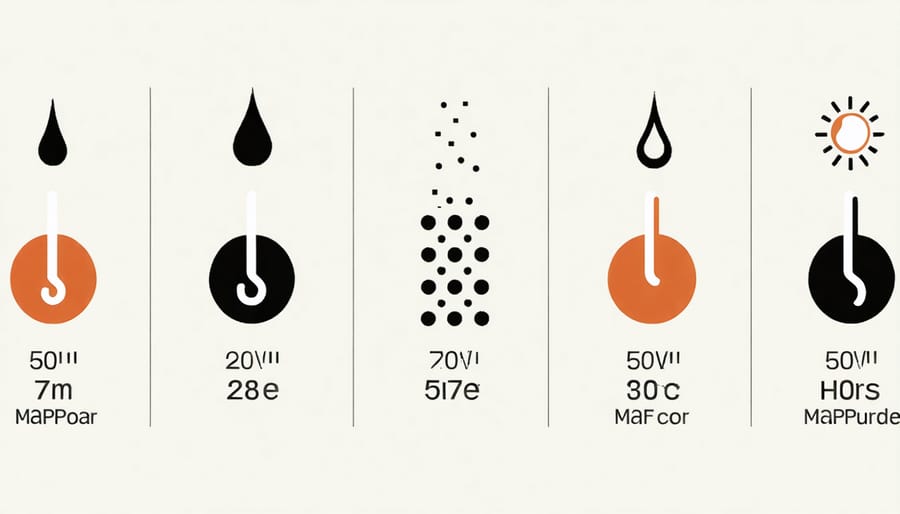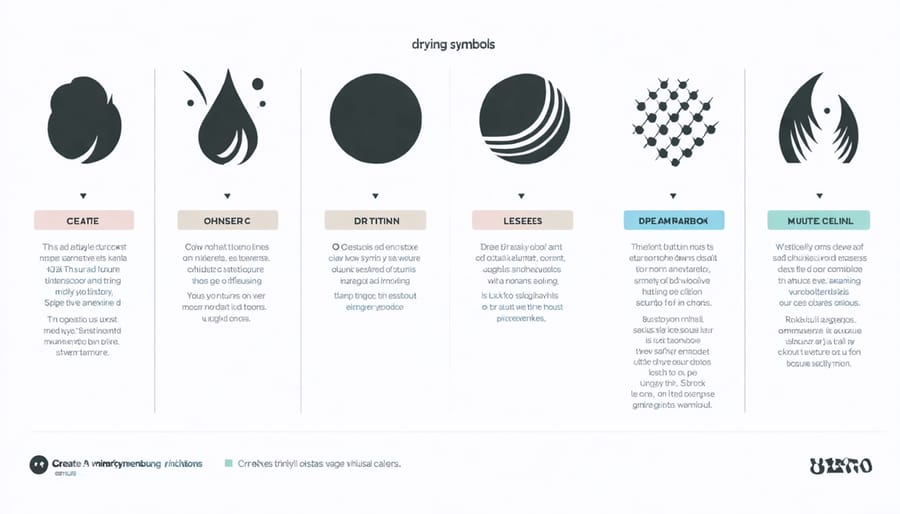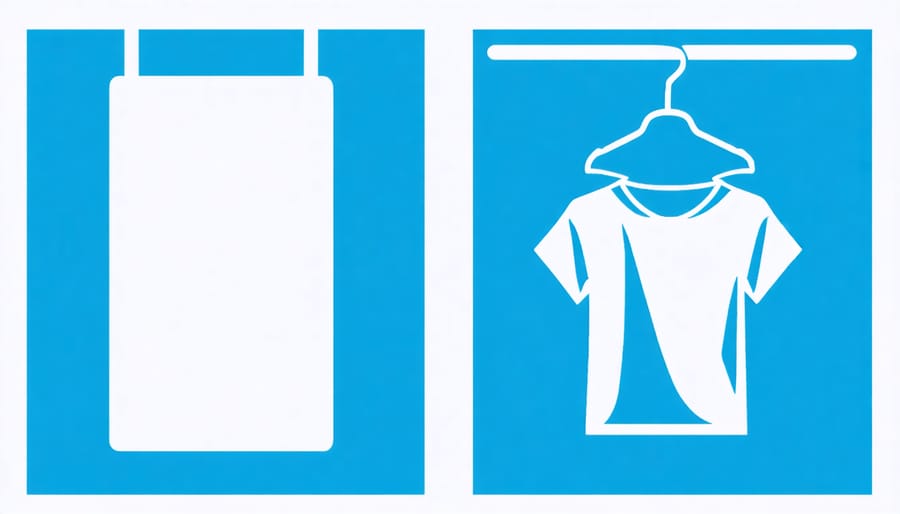Stop ruining your favorite clothes by decoding those mysterious laundry symbols once and for all. Whether you’re just starting with laundry for beginners or looking to master proper garment care, these universal washing instructions are your key to keeping clothes looking fresh and lasting longer. Think of laundry symbols as a secret language that manufacturers use to tell you exactly how to care for each piece – from washing and drying to ironing and professional cleaning. Once you understand these essential care labels, you’ll save money on replacing damaged clothes, prevent shrinkage and color bleeding, and maintain the quality of your wardrobe with confidence. Let’s decode these crucial symbols together and transform your laundry routine from guesswork into a precise science.
Washing Symbols: The Foundation of Clean Clothes

Temperature Indicators
Temperature indicators on laundry labels are crucial to help you protect your clothing investment. These symbols typically appear as dots inside the wash basin symbol, with the number of dots indicating the recommended water temperature.
One dot means cold wash (30°C/85°F), perfect for delicate fabrics, dark colors, and items that might shrink. Two dots indicate warm wash (40°C/105°F), ideal for everyday items like cotton shirts and bedding. Three dots represent hot wash (50°C/120°F), suitable for heavy-duty items like towels and white cotton.
Some labels show specific temperatures in numbers instead of dots. When in doubt, opt for a cooler temperature – you can always rewash if needed, but you can’t undo heat damage. For dark or colorful items, cold water helps preserve the dye and prevent fading. Hot water works best for sanitizing and deep-cleaning white items but can be harsh on fabric fibers.
Remember that modern detergents are formulated to work effectively even in cold water, so you don’t always need high temperatures to get clothes clean.
Wash Cycle Symbols
Wash cycle symbols are your first line of defense in protecting your clothes during laundering. The basic washing symbol looks like a washtub with water waves, but variations tell different stories about how to treat your garments.
A plain washtub symbol means your item is safe for normal washing. When you see dots inside the washtub, they indicate temperature – one dot suggests cold water (30°C), two dots mean warm (40°C), and three dots indicate hot water (50°C or higher).
Lines beneath the washtub symbol signal special cycle requirements. A single line means permanent press, while two lines indicate your garment needs a gentle or delicate cycle. If you spot a hand in the washtub, that’s your cue to hand wash the item only.
Watch out for the crossed-out washtub – this means absolutely no washing! These items typically require dry cleaning only. For wool and delicate fabrics, you’ll often see a curved line at the bottom of the symbol, indicating you should use the wool/delicate cycle on your machine.
Pro tip: When in doubt, always opt for the gentler, cooler washing option to protect your clothes.
Drying Symbols: Prevent Shrinkage and Damage

Machine Drying Instructions
Those mysterious squares with circles inside them? Those are your tumble drying symbols, and they’re simpler than you might think! The basic tumble dry symbol is a square with a circle inside – when you see this, it means your garment is safe for machine drying.
Pay attention to the dots inside the circle, as they indicate temperature settings. One dot means low heat (perfect for delicates and synthetics), two dots indicate medium heat (great for everyday clothes), and three dots signal that high heat is safe (ideal for towels and sturdy cottons).
Sometimes you’ll spot a cross through the tumble dry symbol – this means “do not tumble dry.” Other variations include squiggly lines inside the circle for permanent press settings, or a black dot in the middle for no heat/air dry only.
Pro tip: When in doubt, opt for a lower heat setting. You can always run the dryer longer if needed, but you can’t undo heat damage to your favorite sweater!
Remember to empty your lint trap before each load for optimal drying and safety.
Natural Drying Methods
Natural drying methods are gentle on your clothes and can help them last longer. When you see a square with a curved line inside, that’s your signal to line dry the garment. This classic method allows clothes to dry naturally in the fresh air, which can help remove odors and reduce wrinkles.
For delicate items, you might spot a square with a horizontal line inside – this means lay flat to dry. This symbol is common on sweaters and knit items that could stretch out of shape if hung. Always spread these items on a clean, flat surface, reshaping them while damp to maintain their original form.
Some variations include a square with two vertical lines (drip dry) or a square with three lines in the top corner (dry in the shade). Following these symbols carefully prevents damage like stretching, fading, or fabric distortion.
Pro tip: When line drying outdoors, turn dark-colored clothes inside out to prevent sun fading, and always check the weather forecast first!
Ironing and Special Care Symbols
Iron Temperature Settings
Iron temperature symbols are your garment’s way of telling you exactly how hot your iron should be. These symbols appear as an iron with one, two, or three dots inside – the more dots, the higher the heat setting you can use.
One dot means low heat (up to 230°F), perfect for delicate synthetics like nylon and polyester. Two dots indicate medium heat (up to 300°F), ideal for silk, wool, and most synthetic blends. Three dots allow for high heat (up to 390°F), suitable for sturdy cottons and linens.
Some items might show an iron with a cross through it – that’s a clear “no ironing” warning. If you see an iron with wavy lines underneath, you can use steam. When in doubt, start with the lowest heat setting and gradually increase if needed. Remember, it’s better to iron with less heat than to accidentally scorch your favorite clothes!
Pro tip: Always check these symbols before ironing new garments, as using the wrong temperature can permanently damage your clothes.
Professional Care Symbols
When you see a circle on your clothing label, it’s time to consider professional dry cleaning. A plain circle means “dry clean,” while a circle with an “X” indicates “do not dry clean.” Some items get more specific – a circle with an “F” inside means dry clean with petroleum solvent only, while “P” suggests using any solvent except trichloroethylene.
Watch for letters like “W” (wet clean) or symbols with lines underneath, which provide special instructions to your dry cleaner. For example, a circle with one line means “gentle cycle,” while two lines indicate “very gentle.”
Remember, these professional care symbols are crucial for delicate fabrics like silk, wool, or structured garments. When in doubt, always follow the label’s guidance – it’s better to invest in professional cleaning than risk damaging your favorite pieces. Some modern fabrics marked as “dry clean preferred” can actually be hand-washed, but always err on the side of caution with your special garments.

Common Symbol Combinations and Their Meanings
When it comes to real-world laundry care, you’ll often encounter multiple symbols together on a single label. Understanding these common combinations is key to mastering perfect laundry techniques and keeping your clothes in great condition.
One frequent combination you’ll see is the washing tub symbol with dots and a temperature number, paired with an ironing symbol. For example, a tub with 30°C next to an iron with two dots means you can machine wash the item in warm water and iron it at medium heat. This combination is common on cotton garments and everyday wear.
Another popular grouping includes a circle (dry cleaning) symbol with a letter inside, accompanied by a crossed-out washing tub. This tells you the garment must be dry cleaned only, with the letter indicating which cleaning solution to use. You might spot this on delicate fabrics like silk or wool suits.
The triangle bleach symbol often appears with specific washing instructions. When you see a triangle with two parallel lines inside it next to a 40°C wash symbol, this means you can use non-chlorine bleach and wash in warm water. This combination frequently appears on white or light-colored synthetic fabrics.
For delicate items, you might notice a hand wash symbol paired with a crossed-out tumble dry symbol and a low-heat iron symbol. This combination indicates gentle handling is required: hand wash only, lay flat to dry, and iron at low temperature. You’ll commonly find this on lightweight knits and lingerie.
Pay special attention when you see multiple crossed-out symbols. For instance, if both the iron and tumble dry symbols are crossed out, the garment should be washed according to the wash symbol shown, then air-dried and never ironed. This is typical for items with special finishes or embellishments.
Remember that when symbols appear together, each one is equally important. Following all instructions ensures your clothes maintain their quality and last longer. When in doubt, always opt for the gentler option suggested by the combination of symbols.
Understanding laundry symbols is an essential skill that will help you keep your clothes looking their best for years to come. By taking a few moments to check care labels before washing, you can prevent common laundry mishaps like shrinkage, color bleeding, and fabric damage. Remember that while some symbols might seem complex at first, they’re designed to be universal guides for proper garment care. Make it a habit to reference this guide whenever you’re unsure about a symbol, and don’t hesitate to err on the side of caution when in doubt. With practice, you’ll become more confident in interpreting these symbols, leading to better-maintained clothes and fewer costly replacements. Your wardrobe will thank you for taking the time to learn and follow these important care instructions.
